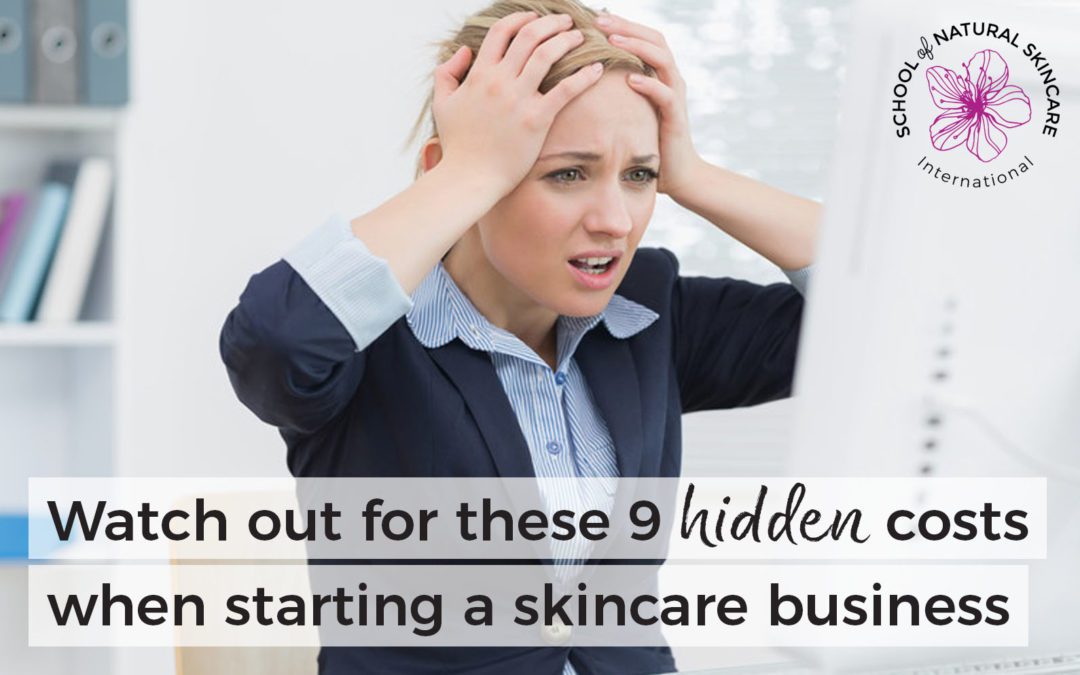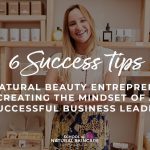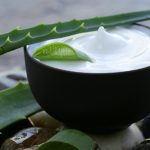Starting a skincare business can be done on a relatively low budget, although of course some investment will be needed up front for various things: ingredients and componentry (vessels, packaging), branding and design, a website, testing and building your business knowledge.
Most costs you can probably expect, you may already have made a list of potential costs and created an overall budget (if you haven’t, its a great place to start), however there are nine key hidden costs which you probably aren’t aware of which, if unknown, could bite you in the behind!
Read on to get the insider knowledge now so you can avoid any nasty surprises.
1) Branding and design
Branding and design is an important part of creating the overall look and feel of your brand and products and of how you get your unique message across to your target audience. If you want to create a beautiful, professional, premium beauty brand, you really will need to invest in a designer to create your overall visual branding as well as designing the packaging and labelling for each individual product. The latter really is not something you can do yourself, unless you are a graphic designer with skills in package design. If you cut corners on this, your brand and products will look amateur-ish and not very professional.
2) Website
Many people are now learning how to create and build their own websites using WordPress or whatever. You too, may be able to teach yourself how and create your own site. However, it is not easy, if you’ve never done it before, you have to have it hosted somewhere secure, set up selling from the site, create the design as well as content. All of which takes time and your site is not guaranteed to look as amazing as you want it to – even with all your effort and frustration! To get your site looking and functioning fantastically, you may need to invest in someone to manage the back-end, or do the design to tweak the code to get it ‘just right’.
3) Photography
To successfully present your brand and products to retailers and to your customers, you must have some professional photography of your products. If you have some photography skills (or know someone who does), great! If taking great photos is not your expertise, then you will need to invest in a photographer who can produce some winning shots. You will need some ‘lifestyle’ photography, for example your products in situ (eg in a beautiful bathroom) or surrounded by ingredients that are in the formula. You will also need some front-on packaging shots against a white background for online retailers.
4) Samples and testers
Whether your brand is stocked in online retailers or physical stores you need a way for customers to ‘try before they buy’. Would you buy a skincare, body product or fragrance without trying it first?
In physical stores this is usually done using testers, which are opened, full-sized products on the shelf next to your stock that customers can try. Samples are a mini sized version of a product (either in a sachet, pot or mini spray – depending what it is) that the customer can take away and try at home. You will be expected to supply both testers and samples (and potentially other promotional items) for most, if not all products, free of charge to your retailers, something which you need to budget for and pay for. You can imagine how this cost could escalate if you’re unaware of it.
5) Promotional materials
In order to communicate information about your brand and products to your target audience so that they know and want to buy from you takes implementation of a carefully crafted marketing and promotional plan. Within this plan you will need to produce various printed materials such as flyers, postcards or showcards. Whether you are selling direct or stocked in online or physical retail stores, you will need to inform your target audience through simple, elegant printed materials. Once you get your flyer (or whatever) into their hands, along with your sample (for example, see above, you have a much better chance of them actually buying your product, instead of just knowing about it.
6) Marketing contribution to retailers
This is a really sneaky cost that can be a surprise to beauty entrepreneurs, not yet fully versed in working with retailers. A small proportion of retailers will ask for a contribution to generic marketing and driving traffic to their store or website. It may only be 1% – 2% of your sales but is a hidden cost you may not be aware of.
7) Public relations
Public relations, aka PR, is how you get your products into magazines and talked about in beauty blogs. By strategically marketing your brand and products to the right people, magazines and bloggers, you will get ‘coverage’ of your products appearing on a regular basis which can be a really effective way to drive sales. Outsourcing this to a PR agency who already have the contacts with the relevant media will be way quicker and more effective than you starting from scratch and doing it yourself. You would be wise to budget for this cost. In addition, and even if you DIY it, you will need to send the magazines and bloggers full-sized products to try and to photograph, another cost to consider.
8) Product testing and certification
In the New Product Development (NPD) life cycle, you first need to create a product that you’re really happy with, ensuring all components (your formula, the vessel, etc) have been tested and positive feedback received from your target audience using a focus group. Then and only then, you need to get it officially tested and certified. You need to ensure your products can be legally sold and by following Good Manufacturing Practice (GMP) and making sure you adhere to the cosmetic and labelling regulations in your country, your product should pass the testing procedure and get certified. This however is a cost most people aren’t aware of when they first start. It also takes time!
9) Your time
Whether it is the time you spend on formulating, researching, producing, administration, planning, finances, marketing or all the other million and one things you need to be doing as a business owner, you need to account for your time as a cost, or you need to ensure that the profit you make covers your time as well as makes a profit for your business. You can do this in different ways, for example you can include a cost within your product cost for your time in manufacture. This is important because as your business grows, you will need to outsource certain tasks such as manufacture, and if you’ve not already included a cost in your Total Product Cost, you will get a nasty shock.
Now, don’t freak out! You won’t necessarily incur all of these costs you didn’t know about, but it is best for you to be aware of them. Its always wise to over-budget for your costs and underestimate your sales – if you can still forecast a profit, you’re good to go.
Over to you
So, if you’ve not already created a simple budget, start now by making a list of all the costs you know and including any of these nine hidden costs. If you already have a budget, add in estimates for these hidden costs before it’s too late.











